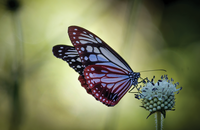
Photo by Pynkhlainborlang Khongwar on Unsplash
Program from one source to many apps with Flutter
Big Flap
Google's software product Flutter [1] is not the first attempt to unify mobile app development. Competitors like Microsoft's Xamarin or Facebook's React Native already offer solutions in the same vein. However, Flutter impresses with excellent documentation, great performance, and the ability to generate apps for Linux, macOS, Windows, and the web on top of Android.
In combination with the free Android Studio development environment, apps for all these platforms can be developed comfortably and easily. The website [2] also offers developers a place to find packages that can be sorted on a number of criteria for every conceivable purpose to extend their Flutter apps with desired feature sets.
At first glance, the need to learn a new language for Flutter, the integrated Dart programming language, seems to be an obstacle. However, if you are already familiar with another object-oriented language such as Java, JavaScript, or C#, you will quickly feel at home, because the syntax of these languages is similar.
Installation
Only a few steps install the new open source framework on your computer. The easiest way to set up Flutter is with Snap:
$ sudo snap install flutter --classic
The project's website explains the Linux process [3] in more detail. To check which components need to be installed and to update the framework to the latest version, enter:
flutter doctor -v flutter upgrade
The recommended development environment is Android Studio, which also comes from Google and is based on the IntelliJ IDEA integrated development environment (IDE) by JetBrains. The latest version can be downloaded free of charge [4]. After
...Buy this article as PDF
(incl. VAT)
Buy ADMIN Magazine
Subscribe to our ADMIN Newsletters
Subscribe to our Linux Newsletters
Find Linux and Open Source Jobs
Most Popular
Support Our Work
ADMIN content is made possible with support from readers like you. Please consider contributing when you've found an article to be beneficial.






